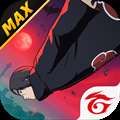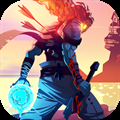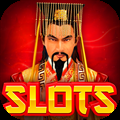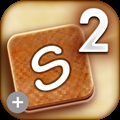Heart of the Swarm: Zerg, Vengeance and Bad Writing. A review.
After three years in the making, a troubled beta phase, and much, much hype, Heart of the Swarm has finally arrived. We've spent the last couple of days with the expansion so we can tell you what we think about the new chapter in the Starcraft saga.
What's New
It goes without saying that Heart of the Swarm brings a plethora of new features. To give you a good idea of what you'll be dealing with, we'll go over each of these in turn. We're happy to report enhanced social functions, extra gameplay modes, and a number of nifty improvements that made our user experience smoother and more enjoyable.
If you've ever felt alone perusing the main menu, or complained that there was no one to talk to, then prepare for not just a revised interface but also the ability to join groups, large gatherings of individuals open to everyone, and form clans, much closer associations that are invite only. In addition to these, the game will also automatically create a list of players from your same local network, so that you can easily form groups with people who live in your area or country.
The Custom game section, sadly, is still suffering from the same issues as it always has. Finding games and specific maps is still as clunky as ever, and exposure for map makers and their newest work is incredibly difficult to come by. Although Blizzard has repeatedly stated their intention to catering to this section of the player base, an adequate solution has yet to be delivered.
Unranked play is another new addition, providing ladderless automatic matchmaking that will prove highly convenient to those suffering from ladder anxiety or who simply want to experiment with other races without losing their current standing.
The biggest change lies in the multiplayer component of the game. Several new units and upgrades join the already considerable roster available, reshuffling the strategies available to you. It might not appear like much initially, but in a game as fine tuned as Starcraft 2, even a single unit can completely change the metagame.
The second most important addition comes in the form of multiplayer replay watching and the Take Command function. It’s hard to stress how much these two features are going to change the way players can train and learn the game. Not only will you be able to analyze a replay with a friend, but you’ll also be able to pause the replay and take command of the armies at any given time. If you’ve ever been curious about how that one game could have gone if only you’d been paying attention, now you can.
Outside of this, the only determination to be made about Starcraft 2’s multiplayer component is that it is above review. The only way to test it is to immerse yourself in it and reach its outermost limits, perhaps an impossible task. While opinions these days more or less agree on past balance issues, providing an accurate judgement on the possibilities of the game at this time is impossible. It took years for Wings of Liberty to exhaust itself, and even longer for Brood War to reach the state it was in during its final seasons. Heart of the Swarm will take some adjusting. A game so new, still so untested, can hardly be said to be the final version. And of course, as it is with all Blizzard games, they are all work in progress.
The Campaign
Heart of the Swarm begins shortly after the events of Wings of Liberty. Kerrigan has been smuggled away from Char by Jim Raynor and Valerian Mengsk, and undergoes a series of trials meant to determine just how much Zerg is left inside her. It doesn’t take long however until they are found and separated by Dominion assassins. Naturally, Kerrigan escapes and makes her way to the Leviathan, the Zerg version of the Hyperion.
From there you can access your mission screen, the Evolution Pit, Kerrigan’s character sheet, and the mission replay menu. The Evolution Pit is where you decide how to upgrade your army. There are two kinds of upgrades: mutations, for the most part simple numerical buffs that can be changed between missions, and evolutions, more drastic changes that alter the way units look and behave. At various points during the game you’ll receive the option of undergoing brief demo missions where you see how each evolution affects the unit in question. After several of these missions I had transformed my slow and clumsy zerglings into cliff-leaping speed demons, enabled Lurker evolutions for my Hydralisks, and endowed Swarm Host locusts with the ability to fly. Terrifying stuff.
The character sheet is unique to Heart of the Swarm, and features, predictably, Kerrigan’s statistics and abilities. Stats become better as you level up, while abilities are unlocked in tiers. You can switch between abilities at any time between missions but you can only choose one per row. With three columns’ worth of abilities you can craft some nifty combos. Depending on what you choose, you can turn Kerrigan either into a one woman Broodlord army, or the ultimate support unit. But whatever you do, you’ll always want her on the front line.
On the Leviathan you’ll also find Izsha, a kind of Zerg Adjutant, and Abathur, the Swarm’s genetic manipulator. I’ll note that Abathur is apparently incapable of forming complete sentences. It must never have occurred to him that as the chief science officer of an alien species he might have to give more than a cursory explanation of his experiments. Or maybe he just knows he’s in a videogame. Various others will join you on your travels, but these two will be your mainstays.
Having taken stock of the Leviathan, Kerrigan is off to do her work. Your attention will be split between engaging the Dominion, regaining control of the scattered Zerg, and following up on Zeratul’s leads. During this, you’ll not only gain levels and increase in power, but also gather more crew members for you to interact with. The extra crew mates, however, are not given much use and they never have anything to say to Kerrigan. For most of the game they’ll decorate your main deck, occasionally offering a line or two about the situation. Don’t expect to get much talk out of your crew, though. The main form of interaction occurs during the missions themselves, that is, when you actually get to play Starcraft.
The mission design gives you a large variety of environments, enemies, objectives and constraints. There are Blizzard classics like base defense, infiltration, and an array of different parameters meant to keep you on your toes. One particularly brilliant mission has you attempting to infest a Protoss vessel. You start out as a larva but then grow into a Queen as you ingest biomass, turning the ship into a Zerg hive even as the Protoss attempt to stop you. The problem here is the difficulty curve, which reaches its maximum around the middle of the game, which is when Kerrigan starts to snowball into the ultimate Hero unit. She doesn’t exactly become as powerful as she appeared in Wings of Liberty, but the abilities she brings to her army drastically reduce the effectiveness of the AI. The game is all well and good in the early stages, when you only have basic roaches and zerglings, but as you unlock evolved strains and gain higher and higher tech units, they become more and more effective under Kerrigan’s increasingly powerful leadership. By the time I unlocked Ultralisks and Broodlords I was stampeding through enemies with upgraded Roaches and Hydralisks. Ultralisks in particular were such effective units that going through the trouble of morphing Broodlords was hardly worth it.
Running through the campaign on Hard difficulty took me about seven hours. I hardly ever had to attempt a mission more than once, though it should be noted I wasn’t pursuing any achievements. Like Wings of Liberty, you can expect a serious increase in difficulty if you decide to accept the extra constraints.
The Story
The gameplay is nothing groundbreaking, but in true Blizzard fashion it’s solid all around. Where Heart of the Swarm really falls apart is the narrative.
For those who witnessed Wings of Liberty and Diablo 3, Heart of the Swarm will come as no surprise. Its ethos is surmised by a line, seriously spoken some half way through the game, that reads like this: “Welcome... to your demise!” A character actually says that line. I only wish it had been Kerrigan. Starcraft’s transformation into farce would then have been complete.
It’s difficult to convey the totality of the story’s failures. People don’t talk, they exchange exposition, and every word spoken by a character has already been said better by someone else and in better stories at that. It’s an exercise in dead language for the benefit of characters who appear unaware that they have a part to play in the drama of their lives. When for the hundredth time Kerrigan announces that “I am the swarm!” you start to feel the ulcer setting in.
Events do not occur in Heart of the Swarm; they are decided. It was decided, for instance, that Kerrigan be obsessed with Mengsk, and it was decided that the universe still tolerate her existence. In a particular scene it might be decided that Raynor be angry. But like so many decisions that look well on paper, none of these translated well into reality, so we got a game where events, mood and dialog are dictated by obvious cues. That’s what the entire narrative is: a series of cues. Cue sadness, cue alienation, cue anger. It’s like playing Heart of the Swarm: The Outline.
Reckoning with the characters’ distinct inability to produce original thoughts and their marked problem of wrapping those thoughts in language that will properly transmit them will describe to many the experience of playing the campaign. Be prepared for inconsistency after inconsistency, the return of characters who are themselves only in name, and above all, a relentless, tragicomical pursuit of bad dialog. Take heed, future game designers: this is exactly how not to write for videogames. So bad is the writing that it falls into that dark and wretched pit sitting between barely tolerable and so bad it’s good. This is so bad it stays bad -- resolutely, irreconcilably bad.
And if the language wasn’t enough, the failures of the writing team also seeped into the characters. It’s impossible to go forward without mentioning some glaring narrative practices employed by Blizzard in the past years. Such as their tendency to bring back characters who were dead with a capital D, or modify facts and histories because they are problems that, I can take no other conclusion, the writing team were unwilling to solve. This is the literary equivalent of chopping off an arm you could have saved through antibiotics. Chris Metzen is no surgeon.
There is little surprise then to discover that Raynor is eager to put Kerrigan’s past “misdeeds” behind her. “That wasn’t you,” he says in response to her acknowledgement that she is in fact a mass murderer. This is tenuous ground. It’d be generous to say that the Kerrigan/Raynor love story was badly misrepresented in the original Starcraft. Our memories of the two revolved around a pretty cold promise that Raynor made to her around the end of Brood War.
Now I am told, but cannot find it anywhere in the game, that the uninfested Kerrigan and the Queen of Blades are in fact two completely different people. A cop out that not only helped transform Wings of Liberty into a Meet Cute, but also wiped the slate clean of a personal history that would have had dire implications for everyone involved. In short, the stuff good games are often made of. Alas, it’s much easier to resolve conflicts that didn’t exist to begin with.
But Heart of the Swarm is about Kerrigan, and fittingly, she’s the biggest problem of them all. Betrayed, abducted by an alien species, transformed into a murderous alien queen then brought back to humanity, she gives barely a hint of dealing with anything approaching the expression “inner turmoil.” It’s this failure that will haunt her all game long, since the decisions she’s driven to depend on her state of mind, and her state of mind doesn’t actually exist. People forget that the uninfested Kerrigan was a minor character who appeared in a couple of missions, and whose only effect was driving Raynor into the confrontation with Mengsk that revealed for the first time the latter’s true intentions (i.e. the broadcast sent during Media Blitz in Wings of Liberty.) For most of Starcraft Kerrigan was the Queen of Blades. Her ruthlessness and sheer villainy not only let her steal the show but allowed her to become one of the most memorable villains in gaming history.
So when Kerrigan is deinfested we are dealing with a new character, a fact the devs seem to ignore. In introducing new characters a key technique is assigning them actions that reveal their personality, and then allowing them to make a wider range of decisions justified by the discoveries we make early on. Kerrigan starts out at the second phase, being treated as an already developed character, when in fact, she’s barely arrived. This is a problem Raynor didn’t have to face; he was already a well known quantity and dealing with easily explainable problems. Kerrigan has basically escaped the Borg. Now she’s going back to them. Further still, she plans to murder everyone who gets in her way. You don’t need proppian analysis to realize the game’s logic has taken a leap or two.
If Kerrigan is missing her memories as the Queen of Blades, doesn’t that make Heart of the Swarm, for her at least, an original descent into Zerghood? This is one of the few ideas that have strength on their own, and like every other it is squandered. A question that is never answered is who is Kerrigan and what does she want, really? We know the theme of Heart of the Swarm is revenge, but that’s an imposition that comes from somewhere else. A trait of ineffective fiction is the hollowness of the characters and the transparence of the story. Like a puppet whose strings you can clearly see, the whole illusion falls apart. There is not an ounce of conviction, of true feeling, for us to latch onto.
I’d like to propose the institution of a metric by which we can judge bad videogame narratives. The higher the magnitude, the more awful the story. Call it, say, the Metzen Scale. I’ll let you guess what rank Heart of the Swarm holds.
My favorite essence is "Goat"
Text by: Andrei "procyonlotor" Filote
What's New
It goes without saying that Heart of the Swarm brings a plethora of new features. To give you a good idea of what you'll be dealing with, we'll go over each of these in turn. We're happy to report enhanced social functions, extra gameplay modes, and a number of nifty improvements that made our user experience smoother and more enjoyable.
If you've ever felt alone perusing the main menu, or complained that there was no one to talk to, then prepare for not just a revised interface but also the ability to join groups, large gatherings of individuals open to everyone, and form clans, much closer associations that are invite only. In addition to these, the game will also automatically create a list of players from your same local network, so that you can easily form groups with people who live in your area or country.
The Custom game section, sadly, is still suffering from the same issues as it always has. Finding games and specific maps is still as clunky as ever, and exposure for map makers and their newest work is incredibly difficult to come by. Although Blizzard has repeatedly stated their intention to catering to this section of the player base, an adequate solution has yet to be delivered.
Unranked play is another new addition, providing ladderless automatic matchmaking that will prove highly convenient to those suffering from ladder anxiety or who simply want to experiment with other races without losing their current standing.
The biggest change lies in the multiplayer component of the game. Several new units and upgrades join the already considerable roster available, reshuffling the strategies available to you. It might not appear like much initially, but in a game as fine tuned as Starcraft 2, even a single unit can completely change the metagame.
The second most important addition comes in the form of multiplayer replay watching and the Take Command function. It’s hard to stress how much these two features are going to change the way players can train and learn the game. Not only will you be able to analyze a replay with a friend, but you’ll also be able to pause the replay and take command of the armies at any given time. If you’ve ever been curious about how that one game could have gone if only you’d been paying attention, now you can.
Outside of this, the only determination to be made about Starcraft 2’s multiplayer component is that it is above review. The only way to test it is to immerse yourself in it and reach its outermost limits, perhaps an impossible task. While opinions these days more or less agree on past balance issues, providing an accurate judgement on the possibilities of the game at this time is impossible. It took years for Wings of Liberty to exhaust itself, and even longer for Brood War to reach the state it was in during its final seasons. Heart of the Swarm will take some adjusting. A game so new, still so untested, can hardly be said to be the final version. And of course, as it is with all Blizzard games, they are all work in progress.
The Campaign
Heart of the Swarm begins shortly after the events of Wings of Liberty. Kerrigan has been smuggled away from Char by Jim Raynor and Valerian Mengsk, and undergoes a series of trials meant to determine just how much Zerg is left inside her. It doesn’t take long however until they are found and separated by Dominion assassins. Naturally, Kerrigan escapes and makes her way to the Leviathan, the Zerg version of the Hyperion.
From there you can access your mission screen, the Evolution Pit, Kerrigan’s character sheet, and the mission replay menu. The Evolution Pit is where you decide how to upgrade your army. There are two kinds of upgrades: mutations, for the most part simple numerical buffs that can be changed between missions, and evolutions, more drastic changes that alter the way units look and behave. At various points during the game you’ll receive the option of undergoing brief demo missions where you see how each evolution affects the unit in question. After several of these missions I had transformed my slow and clumsy zerglings into cliff-leaping speed demons, enabled Lurker evolutions for my Hydralisks, and endowed Swarm Host locusts with the ability to fly. Terrifying stuff.
The character sheet is unique to Heart of the Swarm, and features, predictably, Kerrigan’s statistics and abilities. Stats become better as you level up, while abilities are unlocked in tiers. You can switch between abilities at any time between missions but you can only choose one per row. With three columns’ worth of abilities you can craft some nifty combos. Depending on what you choose, you can turn Kerrigan either into a one woman Broodlord army, or the ultimate support unit. But whatever you do, you’ll always want her on the front line.
On the Leviathan you’ll also find Izsha, a kind of Zerg Adjutant, and Abathur, the Swarm’s genetic manipulator. I’ll note that Abathur is apparently incapable of forming complete sentences. It must never have occurred to him that as the chief science officer of an alien species he might have to give more than a cursory explanation of his experiments. Or maybe he just knows he’s in a videogame. Various others will join you on your travels, but these two will be your mainstays.
Having taken stock of the Leviathan, Kerrigan is off to do her work. Your attention will be split between engaging the Dominion, regaining control of the scattered Zerg, and following up on Zeratul’s leads. During this, you’ll not only gain levels and increase in power, but also gather more crew members for you to interact with. The extra crew mates, however, are not given much use and they never have anything to say to Kerrigan. For most of the game they’ll decorate your main deck, occasionally offering a line or two about the situation. Don’t expect to get much talk out of your crew, though. The main form of interaction occurs during the missions themselves, that is, when you actually get to play Starcraft.
The mission design gives you a large variety of environments, enemies, objectives and constraints. There are Blizzard classics like base defense, infiltration, and an array of different parameters meant to keep you on your toes. One particularly brilliant mission has you attempting to infest a Protoss vessel. You start out as a larva but then grow into a Queen as you ingest biomass, turning the ship into a Zerg hive even as the Protoss attempt to stop you. The problem here is the difficulty curve, which reaches its maximum around the middle of the game, which is when Kerrigan starts to snowball into the ultimate Hero unit. She doesn’t exactly become as powerful as she appeared in Wings of Liberty, but the abilities she brings to her army drastically reduce the effectiveness of the AI. The game is all well and good in the early stages, when you only have basic roaches and zerglings, but as you unlock evolved strains and gain higher and higher tech units, they become more and more effective under Kerrigan’s increasingly powerful leadership. By the time I unlocked Ultralisks and Broodlords I was stampeding through enemies with upgraded Roaches and Hydralisks. Ultralisks in particular were such effective units that going through the trouble of morphing Broodlords was hardly worth it.
Running through the campaign on Hard difficulty took me about seven hours. I hardly ever had to attempt a mission more than once, though it should be noted I wasn’t pursuing any achievements. Like Wings of Liberty, you can expect a serious increase in difficulty if you decide to accept the extra constraints.
The Story
The gameplay is nothing groundbreaking, but in true Blizzard fashion it’s solid all around. Where Heart of the Swarm really falls apart is the narrative.
For those who witnessed Wings of Liberty and Diablo 3, Heart of the Swarm will come as no surprise. Its ethos is surmised by a line, seriously spoken some half way through the game, that reads like this: “Welcome... to your demise!” A character actually says that line. I only wish it had been Kerrigan. Starcraft’s transformation into farce would then have been complete.
It’s difficult to convey the totality of the story’s failures. People don’t talk, they exchange exposition, and every word spoken by a character has already been said better by someone else and in better stories at that. It’s an exercise in dead language for the benefit of characters who appear unaware that they have a part to play in the drama of their lives. When for the hundredth time Kerrigan announces that “I am the swarm!” you start to feel the ulcer setting in.
Events do not occur in Heart of the Swarm; they are decided. It was decided, for instance, that Kerrigan be obsessed with Mengsk, and it was decided that the universe still tolerate her existence. In a particular scene it might be decided that Raynor be angry. But like so many decisions that look well on paper, none of these translated well into reality, so we got a game where events, mood and dialog are dictated by obvious cues. That’s what the entire narrative is: a series of cues. Cue sadness, cue alienation, cue anger. It’s like playing Heart of the Swarm: The Outline.
Reckoning with the characters’ distinct inability to produce original thoughts and their marked problem of wrapping those thoughts in language that will properly transmit them will describe to many the experience of playing the campaign. Be prepared for inconsistency after inconsistency, the return of characters who are themselves only in name, and above all, a relentless, tragicomical pursuit of bad dialog. Take heed, future game designers: this is exactly how not to write for videogames. So bad is the writing that it falls into that dark and wretched pit sitting between barely tolerable and so bad it’s good. This is so bad it stays bad -- resolutely, irreconcilably bad.
And if the language wasn’t enough, the failures of the writing team also seeped into the characters. It’s impossible to go forward without mentioning some glaring narrative practices employed by Blizzard in the past years. Such as their tendency to bring back characters who were dead with a capital D, or modify facts and histories because they are problems that, I can take no other conclusion, the writing team were unwilling to solve. This is the literary equivalent of chopping off an arm you could have saved through antibiotics. Chris Metzen is no surgeon.
There is little surprise then to discover that Raynor is eager to put Kerrigan’s past “misdeeds” behind her. “That wasn’t you,” he says in response to her acknowledgement that she is in fact a mass murderer. This is tenuous ground. It’d be generous to say that the Kerrigan/Raynor love story was badly misrepresented in the original Starcraft. Our memories of the two revolved around a pretty cold promise that Raynor made to her around the end of Brood War.
Now I am told, but cannot find it anywhere in the game, that the uninfested Kerrigan and the Queen of Blades are in fact two completely different people. A cop out that not only helped transform Wings of Liberty into a Meet Cute, but also wiped the slate clean of a personal history that would have had dire implications for everyone involved. In short, the stuff good games are often made of. Alas, it’s much easier to resolve conflicts that didn’t exist to begin with.
But Heart of the Swarm is about Kerrigan, and fittingly, she’s the biggest problem of them all. Betrayed, abducted by an alien species, transformed into a murderous alien queen then brought back to humanity, she gives barely a hint of dealing with anything approaching the expression “inner turmoil.” It’s this failure that will haunt her all game long, since the decisions she’s driven to depend on her state of mind, and her state of mind doesn’t actually exist. People forget that the uninfested Kerrigan was a minor character who appeared in a couple of missions, and whose only effect was driving Raynor into the confrontation with Mengsk that revealed for the first time the latter’s true intentions (i.e. the broadcast sent during Media Blitz in Wings of Liberty.) For most of Starcraft Kerrigan was the Queen of Blades. Her ruthlessness and sheer villainy not only let her steal the show but allowed her to become one of the most memorable villains in gaming history.
So when Kerrigan is deinfested we are dealing with a new character, a fact the devs seem to ignore. In introducing new characters a key technique is assigning them actions that reveal their personality, and then allowing them to make a wider range of decisions justified by the discoveries we make early on. Kerrigan starts out at the second phase, being treated as an already developed character, when in fact, she’s barely arrived. This is a problem Raynor didn’t have to face; he was already a well known quantity and dealing with easily explainable problems. Kerrigan has basically escaped the Borg. Now she’s going back to them. Further still, she plans to murder everyone who gets in her way. You don’t need proppian analysis to realize the game’s logic has taken a leap or two.
If Kerrigan is missing her memories as the Queen of Blades, doesn’t that make Heart of the Swarm, for her at least, an original descent into Zerghood? This is one of the few ideas that have strength on their own, and like every other it is squandered. A question that is never answered is who is Kerrigan and what does she want, really? We know the theme of Heart of the Swarm is revenge, but that’s an imposition that comes from somewhere else. A trait of ineffective fiction is the hollowness of the characters and the transparence of the story. Like a puppet whose strings you can clearly see, the whole illusion falls apart. There is not an ounce of conviction, of true feeling, for us to latch onto.
I’d like to propose the institution of a metric by which we can judge bad videogame narratives. The higher the magnitude, the more awful the story. Call it, say, the Metzen Scale. I’ll let you guess what rank Heart of the Swarm holds.
My favorite essence is "Goat"
Text by: Andrei "procyonlotor" Filote













